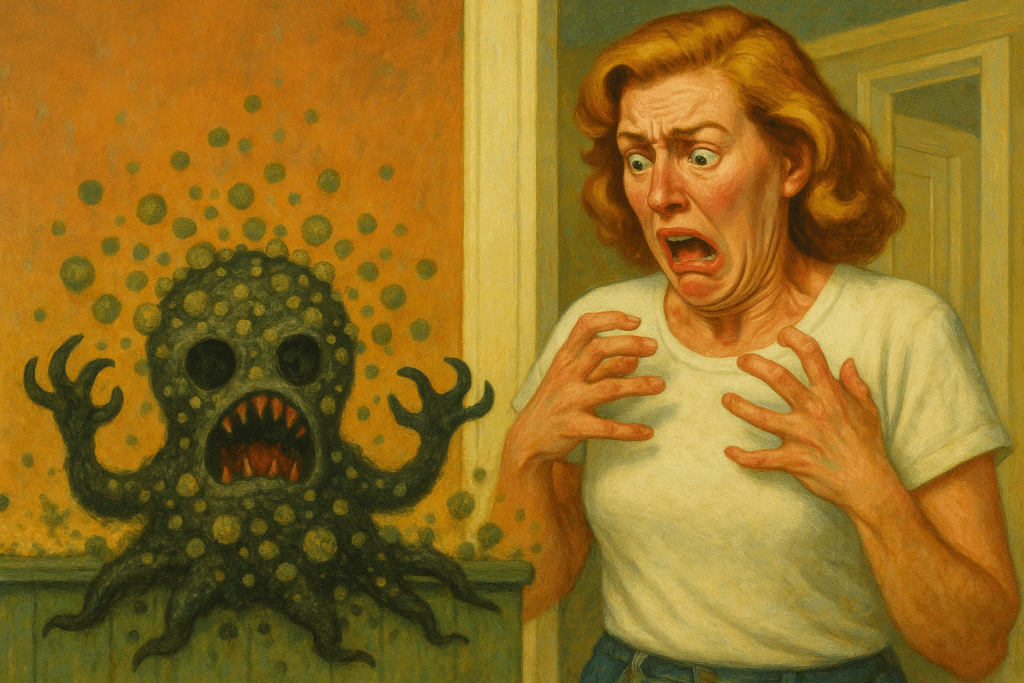
If you’re buying, fixing, and renting homes in Maryland, Washington, DC, or Virginia, you already know that every distressed property comes with its own surprises. Some are cosmetic and easy to fix; others can turn into expensive deal-breakers. One of the most common—and most misunderstood—issues is mold. Left unaddressed, mold can lower property values, stall your rehab timelines, and even expose you to liability as a landlord.
Let’s break down what you need to know about identifying, treating, and preventing mold in your real estate investments here in the DMV.
What Is Mold?
Mold is a type of fungus that thrives in damp, poorly ventilated environments. It spreads through microscopic spores that are always present in the air but grow rapidly when they find the right conditions: moisture, organic material, and warmth.
While not all mold is dangerous, certain types can cause health problems or significant property damage. You might be surprised to discover that mold comes in different forms, shapes, and colors. Each type should be approached differently.
Common Types of Mold in Homes
- Cladosporium – Often found on wood, carpets, and fabrics. Usually black or green.
- Aspergillus – Common indoors, especially in HVAC systems. Appears in a variety of colors.
- Penicillium – Blue or green, thrives on water-damaged materials like drywall or insulation.
- Stachybotrys chartarum (“black mold”) – The most feared type. Grows in consistently wet areas, particularly behind walls or under floors.
Signs of Mold and Where to Look in Distressed Properties
When walking into a potential investment property, keep your eyes (and nose) open for:
- Visible growth – Black, green, or white patches on walls, ceilings, or around windows.
- Musty odor – A damp, earthy smell, especially in basements and crawl spaces.
- Water damage – Stains, peeling paint, or warped drywall are red flags.
- High humidity – Bathrooms, kitchens, and poorly ventilated basements are hot spots.
Key Places to Check Locally
- Basements and crawl spaces – Especially common in Maryland homes where sump pumps or French drains fail.
- Attics – In older DC rowhomes or Northern Virginia colonials with poor roof ventilation.
- Bathrooms and kitchens – Leaky plumbing in multi-family properties is a common culprit.
- Around windows and doors – Many older Baltimore and Prince George’s County homes have poor sealing, leading to condensation and mold growth.
Mold Remediation Techniques (and What They Cost)
Not all mold problems are equal—sometimes all that is required is a DIY wipe-down, and sometimes it’s a major rehab line item.
- Surface Cleaning (DIY or Professional) – Small areas on tile or non-porous surfaces can often be treated with commercial cleaners or a bleach solution. Costs: under $500.
- Containment and Removal – For mold on drywall, carpet, or insulation, professionals seal the area, remove contaminated materials, and clean with specialized equipment. Costs: $1,500–$5,000, depending on scope.
- Whole-House Remediation – In severe cases, often after flooding or long-term leaks, the cost can climb to $10,000–$30,000+.
Tip for investors: Always build a cushion in your rehab budget for hidden mold, especially in older properties in humid parts of Maryland and Virginia.
Mold Testing and Landlord Responsibilities
For landlords, mold isn’t just a maintenance issue—it’s a legal one. Tenants may claim that mold makes a unit uninhabitable, putting you at risk of lawsuits or withheld rent.
Testing Options
- DIY test kits – Around $40–$70, but results are less reliable.
- Professional mold testing – A certified inspector collects samples and lab-tests them. Costs $300–$700, but results carry more weight in disputes.
DMV Area Laws
- Maryland – No specific statewide mold laws, but landlords must provide “safe and habitable” housing. Local counties, such as Montgomery and Baltimore, enforce strict housing codes related to moisture and mold.
- Washington, DC – Strong tenant protections. Landlords are responsible for mold remediation if the cause is not tenant behavior. Failure to act quickly can lead to rent escrow or fines.
- Virginia – Landlords must disclose visible mold in move-in inspection reports and remediate it before occupancy. If mold develops later, landlords must act within five days of notice.
How to Prevent Mold in Your Investment Property
The best mold remediation is prevention. Here’s what local investors can do:
- Address leaks immediately – Whether it’s a dripping faucet in Alexandria or a leaking roof in Rockville, water intrusion is mold’s best friend.
- Improve ventilation – Install bathroom fans, attic vents, and dehumidifiers in basements.
- Use mold-resistant materials – Consider mold-resistant drywall and paints when rehabbing rentals.
- Grade landscaping properly – In many Virginia and Maryland homes, poor grading funnels water toward the foundation.
- Regular inspections – For landlords, seasonal checks (especially after heavy rains or snow melts) can save thousands later.
Final Thoughts for Local Real Estate Investors
Mold is common in older and distressed homes throughout Maryland, DC, and Virginia. For fix-and-flip investors, it can eat into profits if not properly budgeted for. For landlords, ignoring it can lead to legal headaches. But with proper inspection, remediation, and prevention, mold doesn’t have to derail your investment strategy.
At New Funding Resources, we specialize in helping local investors navigate these challenges with financing tailored to short-term rehabs and rental property acquisitions. If you’re evaluating a property and wondering whether it’s worth the investment—even with mold—reach out to us. We’ve worked with countless investors across the DMV who’ve turned problem properties into profitable opportunities.
 New Funding Resources
New Funding Resources 





Leave a Reply